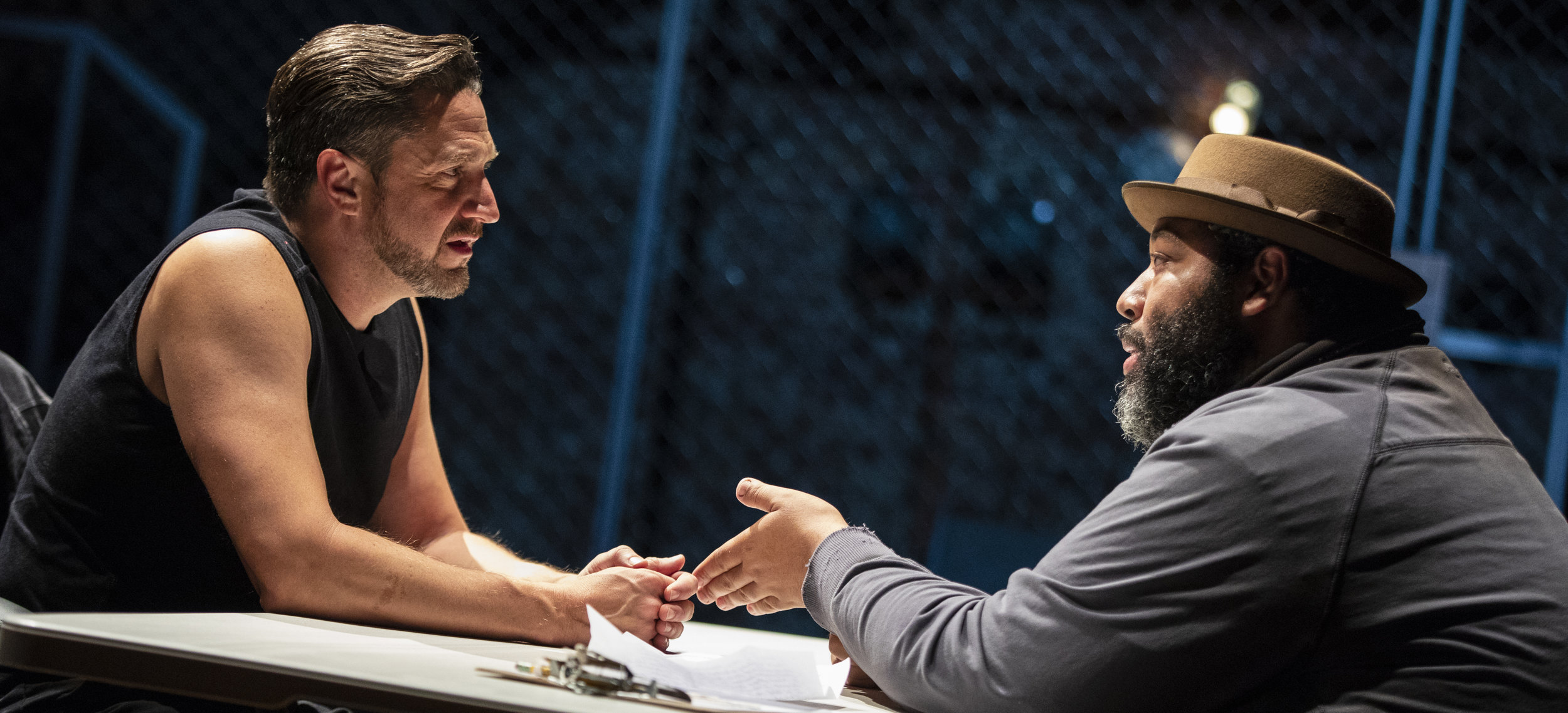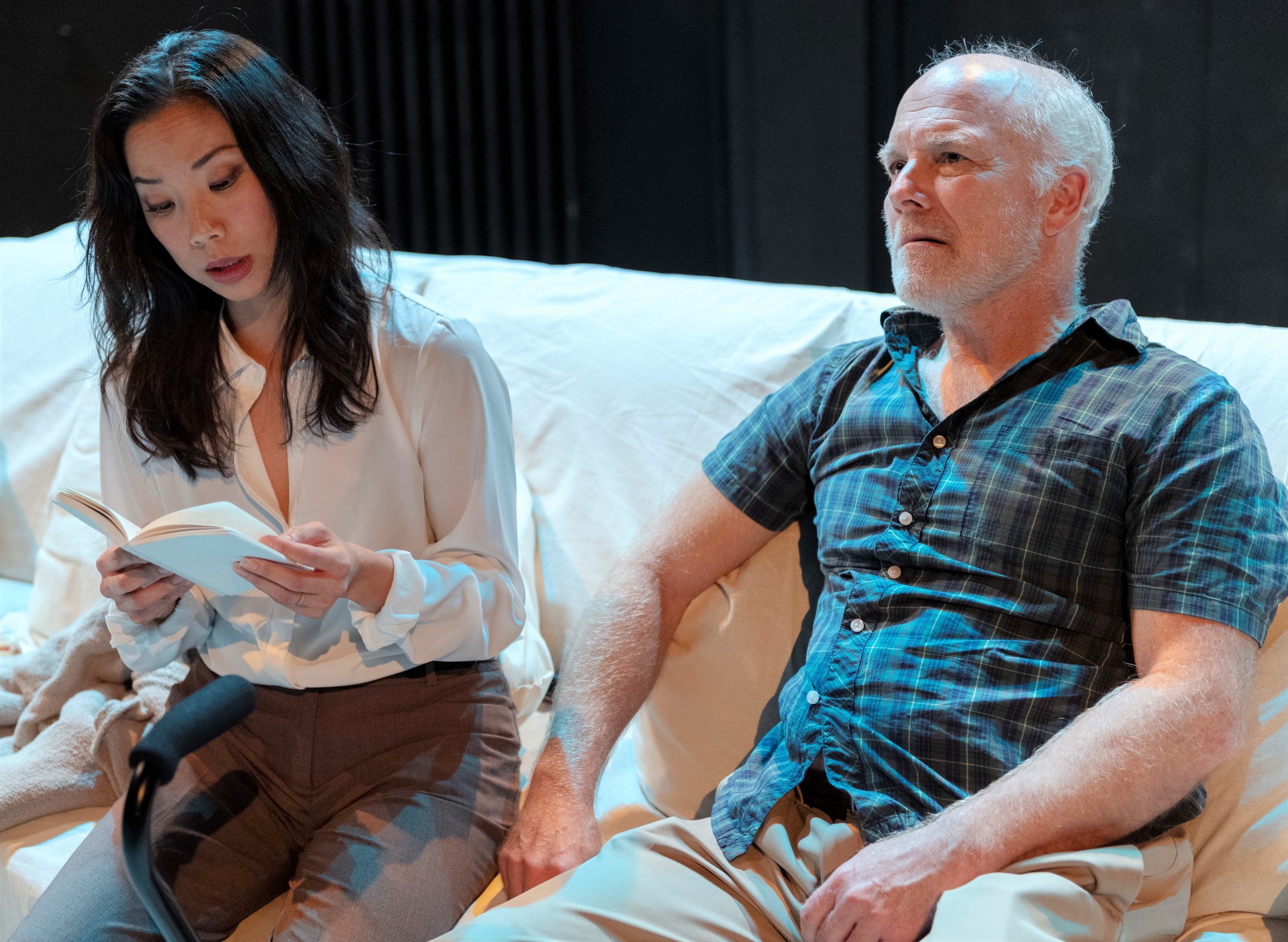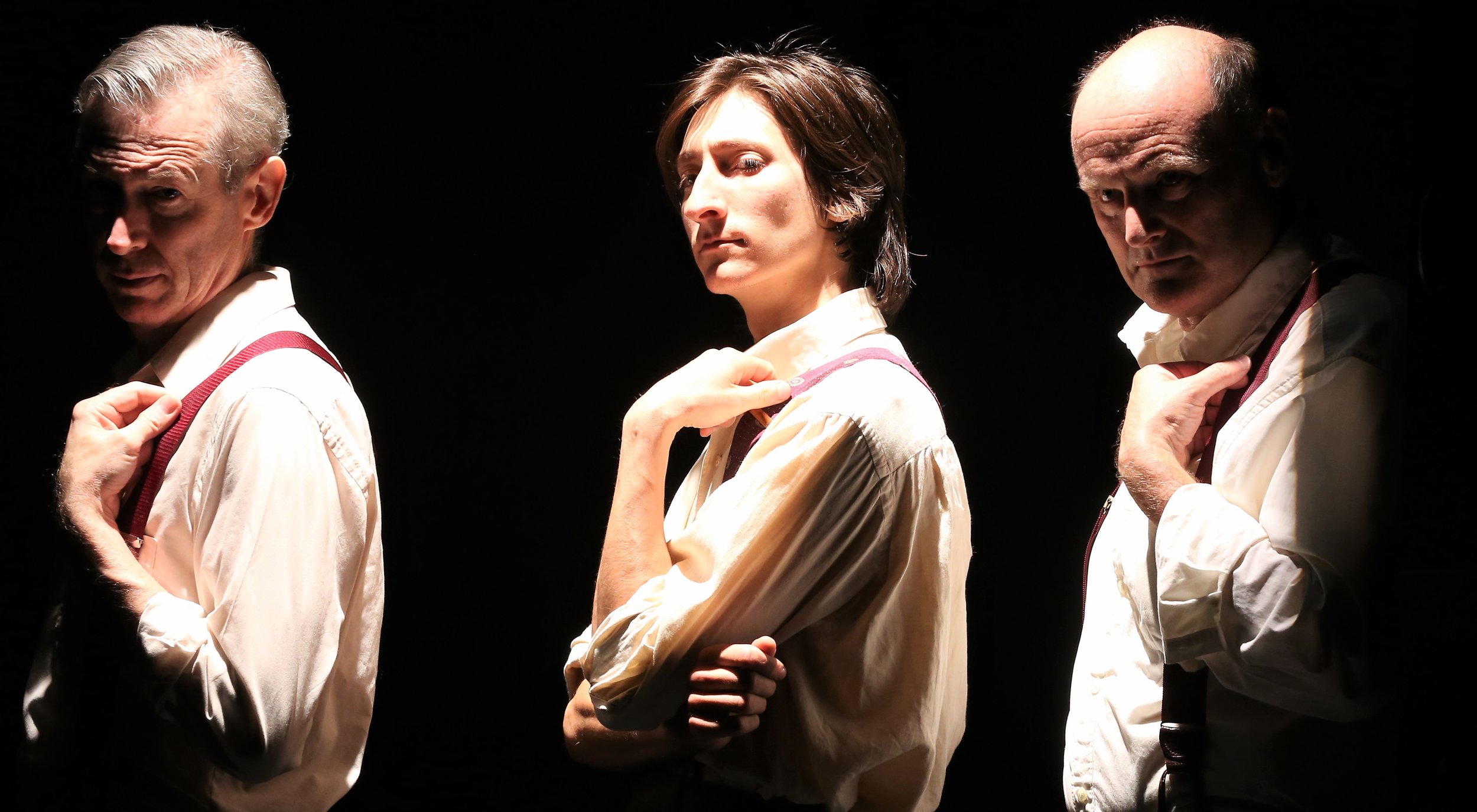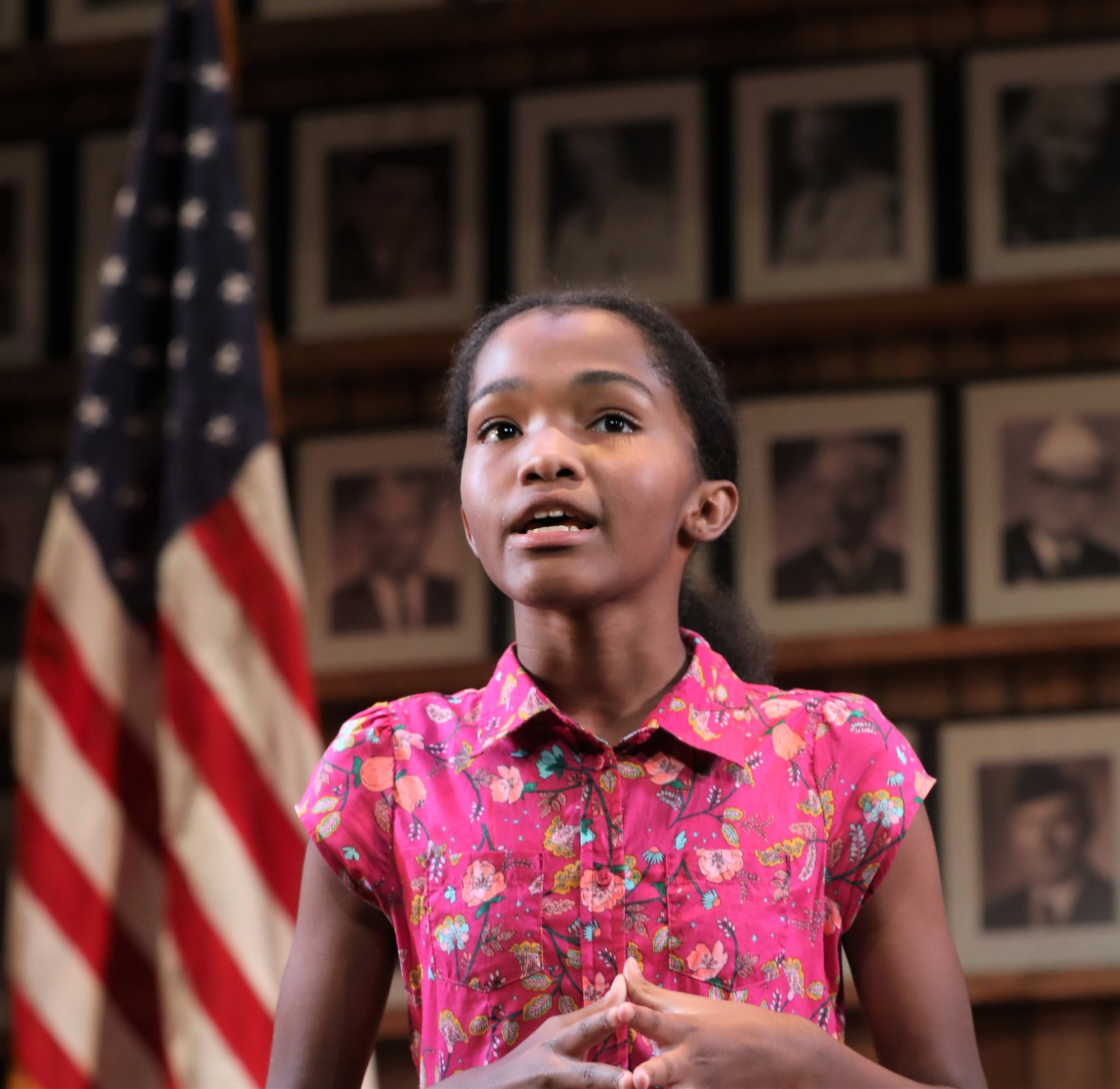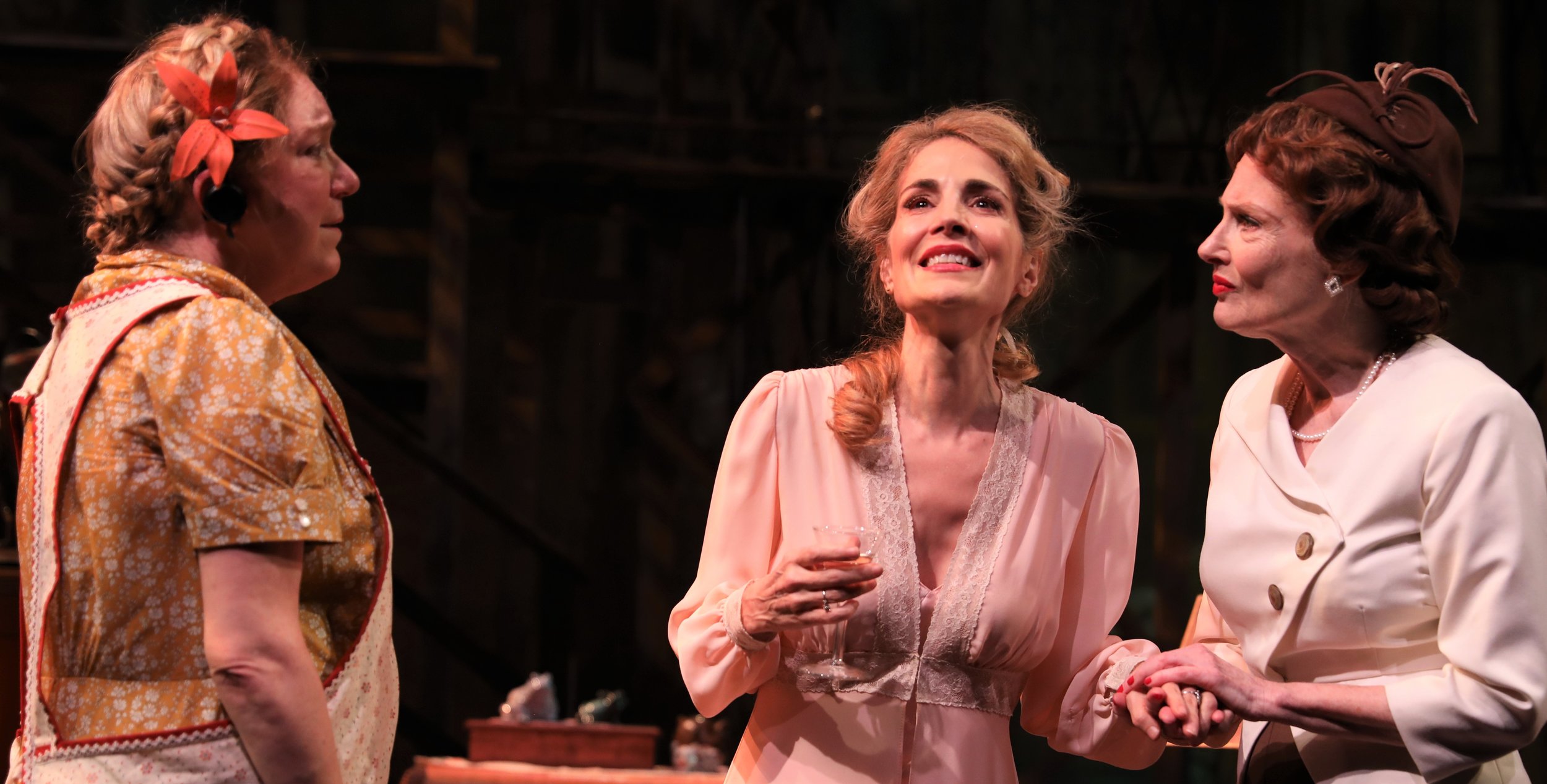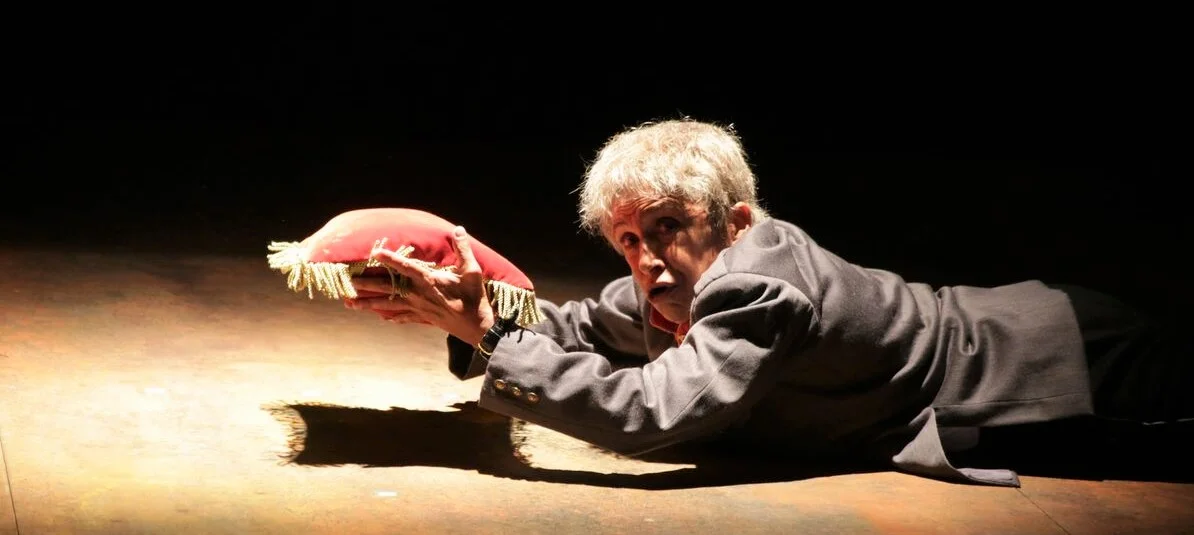Shadow of Heroes, a gripping and sad tale, ruminates on the question: “Where does fraud begin and truth leave off?” It brings to life the true story of László (Trevor St. John-Gilbert) and Julia Rajk (Erin Beirnard), Marxist leaders in the Hungarian resistance during World War II. László and Julia are fierce and clear-eyed leaders whose actions helped create the post-war government in Hungary. But it is János Kádár (Michael Turner), a nebbishy friend who seems barely capable of carrying out the underground tasks asked of him, who survives the rise and fall of factions and, after the war, becomes a central figure in the newly formed government, while László and Julia are imprisoned and later martyred.
Ernő Gerő (David Logan Rankin, left), Hungarian party leader after the war, and László Rajk (Trevor St. John-Gilbert) talk candidly about politics. Top: Gerő (Rankin) toasts the new Hungarian Communist party with Beater, a partisan (Joseph J. Menino, left).
The portrait of Hungarians living under a totalitarian government is well wrought in Robert Ardrey’s gripping 1958 drama, directed by Alex Roe. The Author (Joel Rainwater) adeptly narrates the historical events, and there are many to follow, as the story outlines how politics is played like a chess game. After the war, László is made foreign minister. Someone asks, “When did he become foreign minister?” The response is “This morning.” But for each advance, there is a coup. László is soon accused of anti-party actions and imprisoned, tortured and hanged.
Ernő Gerő (a standout performance by David Logan Rankin), the Communist party leader after the war, cuts an imposing and sinister figure. Other characters, such as Viktor (H. Clark Kee), a cruel but bumbling general; his brutal son (James Ross; a talent to watch) who tortures the prisoners, including Rajk, show how personal views were redirected as political winds changed.
The Soviets played a complicated role in the Hungarian Revolution. Zenon Zeleniuch is the cold, emotionless Yuri Andropov, the Soviet ambassador to Hungary who helped suppress the revolution. He is not the only ideologue in this history lesson. When Gerő isn’t clear about something, he says, “Can’t you tell me something in party terms?”
László (John-Gilbert) (R), in the grip of Rakosi (Zenon Zeleniuch) (L) on his way to prison. Photographs by Emily Hewitt.
A very simple set (Vincent Gunn) of large wooden boxes, which are moved around to create scenes, gives a sense of the poverty of society during the Hungarian Revolution. Jessie Lynn Smith’s lighting, balancing light and dark, captures the shadowiness of both the actions of so many, as well as the way heroes (such as László and Julia) were cast to the corners during this tumultuous time. Sidney Fortner’s costumes expertly exaggerate the difference between peasants (in drab, worn-out clothing) and politicos (in sharp, well-cut suits). The actors play multiple roles and include Margaret Catov, Steve Humphreys and Joseph J. Menino.
“Don’t look at your watch,” László tells János. “Looking at a watch doesn’t change time.” How right he is. People disappeared, were killed quietly, or executed publicly. At one point, János is brought down from his political pedestal, imprisoned and tortured so badly his hand is crippled. But then he is appointed to head the party, where he served for more than 30 years. (It’s hard to keep track when government appointments changed like a game of musical chairs.) What is the cost of totalitarianism? The cost is the truth and everyone’s changes according to political need, and for their own protection, making even a simple thing like friendship a complicated and sometimes dangerous proposition.
Shadow of Heroes plays through Dec. 9 at the Metropolitan Playhouse (220 E. 4th St., between Avenues A and B). Evening performances are at 7 p.m. Monday through Wednesday and at 7:30 p.m. Thursday through Saturday; matinees are at 3 p.m. Sunday. To purchase ticket, call (800) 838-3006 or visit the box office or metropolitanplayhouse.org/shadow.











